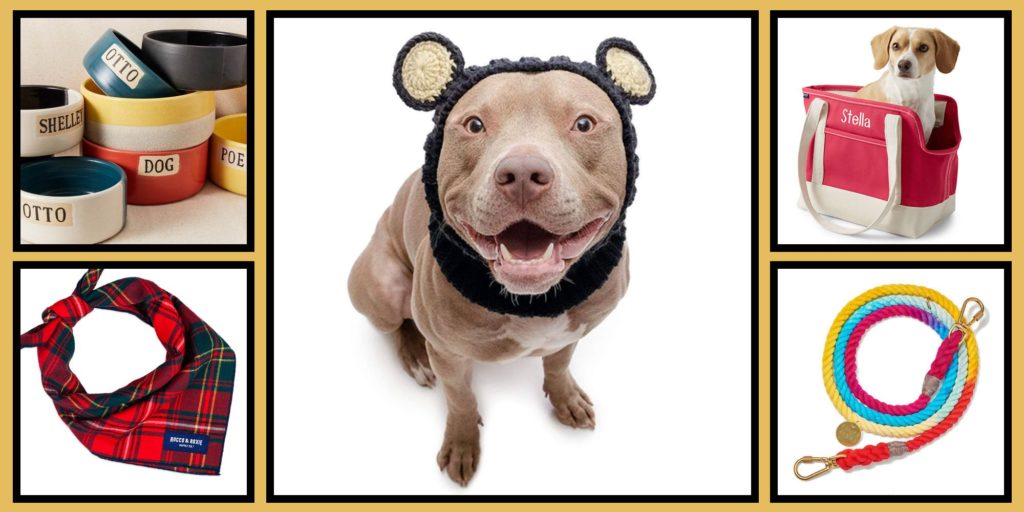Like any other Labrador Retrievers, Silver Labradors exhibit qualities like loyalty, even temperament, intelligence, and affection. Then, what is it that makes them so remarkable and unique among all other Labrador Retrievers?
The answer is their beautiful, eye-catching double-coat. The silver-blue-grey coat makes these dogs look so charming that you cannot help it but feel enchanted. Even though their lineage is a hotly debated topic among researchers, certain studies argue that their striking coat is an outcome of two recessive inheritances.
Whatever be their lineage or the cause of their body-color, the fact is that they are unique, and people love them. And because of these very reasons, they tend to cost a lot more than the Labradors of standard colors.
However, it is you who will decide whether such a high cost is worth it or not after going through this article. In the coming sections, we will discuss all the details and debates related to the beautiful Silver Labradors. Even though no studies have still been able to put a full stop on the speculations regarding Silver Labs, this article will try to give you an insight into the various merits and demerits of owning a Silver Labrador.
What is the cost of a Silver Labrador?
In India, the price of a Labrador Retriever depends on a variety of factors:
- Location of your residence.
- Location of the breeder.
- Age of the dog.
- Origin of the dog.
- Breed- pure or mixed.
- Colour of the coat
- The health of the dog
Based on these factors, a Labrador puppy of standard color can cost you between Rs. 4,000 to Rs. 85,000. Because they are so rare, Silver Labradors can cost you even more. However, if you wish to own an unusual dog and can afford the cost, then Silver Labs are definitely the dog for you.
Why have Silver Labradors created So Much Controversy?

Some of the most significant reasons behind the colossal controversy created by the Silver Labradors are as follows:
- The popularity of the Labrador Breed: Since the beginning of the 1990s, Labrador Retrievers, in general, have been ruling the popularity charts. With such a huge fan base, controversies are bound to surround the breed if some kind of deviations is entertained. And this is precisely what has happened with the Silver Labs. The deep emotions of the Labrador lovers have vilified them and tagged them as a disgrace to the Labrador family
If it was any other dog breed, say a Cesky Terrier, or an English Foxhound, most of the people won’t have even bothered about an alteration in color. You could even sell a brown Cesky Terrier, and no one would even notice. However, here you are talking about one of the most popular dog breeds in the world. Therefore, even a slight variation in the body color can lead you to encounter grave repercussions. - Rise of Backyard Breeders: The fact that Labrador Retrievers are so in demand in the market has given rise to a large number of backyard breeders. Such breeders are neither solicitous nor competent to safeguard the overall health of the Labrador Retriever breed – at least not according to the experts.
On top of that, Silver Labradors are so rare. Consequently, they serve as the perfect source of profit for the backyard breeders. As a result, people have developed a lot of prejudices regarding the health and appearance of Silver Labradors. The color of the coat is just one of those prejudices. - Uncertainty around the status of Silver Labradors: When it comes to the debate concerning Silver Lab’s standing as a Labrador, there is no definite answer. All that exists is speculation and uncertainty. And the immaturity of the so-called retriever lovers has turned Silver Lab’s ambiguity into degeneracy.
- The Standard Colours of Labradors: Since the 1900s, three colors have been accepted as the standard hues of Labrador Retrievers, namely black, chocolate and yellow. While the black and the chocolate colors continued to be more or less the same throughout the 20th century, the yellow Colour showed some variations. There were three variants of yellow-colored Labradors– almost white, butterscotch, and fox red.
However, you will never find someone questioning such variations in yellow Colour. But when it comes to silver, charcoal, or Champagne colored retrievers, they start suspecting its Labrador status. The argument is simple, they are probably the product of a crossbreeding between a Labrador and a different dog breed. Otherwise, Labradors do not tend to have such body color.
Do Silver Labradors Meet the Standards of Labrador Breed?
Truth to be told, a Labrador can be called a Labrador only if it meets the breed standard of a reputed Kennel Club. For example, according to the American Kennel Club, the following features of your dog can get them disqualified as a Labrador Retriever:
- Docked or cropped tail.
- Pink or colorless nose.
- Lack of pigment on eye rims.
Now, one may ask why Silver Labradors are disqualified. Do they develop any of these issues?
The answer is inherent in the American Kennel Club’s color description of Labrador Retrievers. According to their website, the following deviations in coat color are the grounds for disqualification of your dog:
- Colors or color combinations other than black, chocolate, and yellow.
- Black with tawny markings.
- Black with yellowish-brown markings.
- Chocolate with tawny markings
- Chocolate with yellow-brown markings.
Besides the grounds for disqualification mentioned above, the website also specifies the permissible color variations. According to the website, for yellow, it is light cream to fox-red. And for chocolate, it is bright to dark. As far as black is concerned, it must be completely black.
Now, if you are a purist, then the conditions mentioned above can turn out to be the end of discussion. However, if you are charmed by the silver-colored Labradors, then the story has not ended yet. Read ahead to find out what’s in store for you.
How did Silver Labradors Inherit that Silver Coat?

All the debates surrounding the Silver Labs are related to their coat. The beautiful silver, charcoal, or Champagne colored skin that makes them look so unique and yet serve as the leading cause of all their miseries. Although genetics has managed to find out the main reason behind that silver coat, it has failed to establish its exact origin. In other words, we know what leads to that unique colored coat. What we don’t know is that where did this color comes from.
It is a known fact that the color of a dog is determined by the gene combinations of its parents. It is not mere speculation or theory. Instead, it is a proven fact. Therefore, to find out the exact cause of your Labrador’s body color, you need to dive deeper into the world of Genetics.
First of all, remember that each Labrador has two pairs of alleles. When they are bred with another Labrador, the resultant Labrador pup will receive one pair of alleles from each parent. For example, if the father or the mother of a puppy has a gene combination eebb, then the pup will receive one ‘e’ allele and one ‘b’ allele from that parent. Conversely, if the parent of the puppy possesses a gene combination called EeBb, it may pass an ‘E’ or ‘e’ allele and a ‘B’ or ‘b’ allele to its pup.
Finally, it must be kept in mind that if the parents of a puppy are of yellow Colour, then they by no means will inherit any different color. In this context, the B alleles won’t play any prominent role in their body color. However, if you breed two Black Labradors, their puppies can inherit different body colors like chocolate, yellow and black.
The following Genetics Chart will help you to understand the whole mechanism of the body color inherited by Labradors. The top-most row reflects the genes contributed by male Labradors. And the column on the left-hand side reflects the genes contributed by female Labradors:
| Female/Male | EB | Eb | eB | eb |
| EB | EEBB | EEBb | EeBB | EeBb |
| Eb | EEBb | EEbb | EeBb | Eebb |
| eB | EeBB | EeBb | eeBB | eeBb |
| Eb | EeBb | Eebb | eeBb | eebb |
If you carefully study the chart, you will understand that as far as Labradors are concerned, there are a total of nine probable gene combinations. Among these gene combinations,
- eeBB, eeBb, and eebb will invariably lead to the production of Yellow Labradors.
- EEbb and Eebb will invariably produce Chocolate Labradors.
- And Black Labradors will be produced by combinations, EEB, EeBB, EEBb, and EeBb.
As you can see, in comparison to Chocolate and Yellow Labradors, the number of gene combinations for producing Black Labradors is much more. Consequently, there are more Black Labradors on the earth than any other color.
Birth of Silver Labradors
Apart from the gene pairs mentioned above, Labradors possess another gene pair. These pairs are composed of either the ‘D’ or the ‘d’ allele. As far as the genetic history of Labradors is concerned, it is the ‘DD’ pair that has been prominently present in their body. And the specialty of this pair is that it has no effect on the coloring of a Labrador’s body. In other words, Labradors with the gene pair ‘DD’ will possess any of the three standard body colors. Even if a Lab inherits, one ‘d’ allele in its D gene pair (Dd), the Colour of the Lab will be one of the three accepted colors.
To possess a silver coat, a Labrador needs to inherit two recessive ‘d’ alleles in its D pair (dd).
It follows from the above discussion that the D gene pair can determine your Lab’s coat color in three ways:
- DD: Standard colors.
- Dd: Standard colors but has the potential to produce puppies of dilute colors.
- dd: Diluted colors but has the potential to produce standard colored puppies if mates with a Lab possessing ‘DD’ gene pair. If this diluted- colored dog mates with a dog with ‘Dd’ gene pair, then some puppies will be of standard colors and some will be of dilute colors.
There are variations in the dilute colors as well. Depending on the D pair of standard colored Labradors, there can be three kinds of dilute colored Labs:
| Solid Colour | Diluted Version |
| Chocolate | Silver |
| Yellow | Champagne |
| Black | Charcoal |
Are Silver Labradors Mixed Breed?

As mentioned earlier, Genetics has successfully established the primary cause of dilute colors of Labrador Retrievers. However, it is still not clear from where did these diluted genes come from? There are only speculations. And one of those speculations is that at some point in time, Labradors were crossed with Weimaraners to produce these unusual dogs.
Well, if you have seen a Weimaraner, then you would definitely know what this speculation is all about. The body color of Silver Labradors perfectly matches with that of Weimaraners. Such a striking similarity has further given a boost to the assumptions of Silver Labradors being a mixed breed.
Besides that, Weimaraners’ do have some diluted genes that give them their silver body color. Now, that fact is enough to trigger the imagination of the attackers of Silver Labradors. They do not need any other evidence to prove that Silver Labs are not Labradors at all. According to them, they have the science to prove that Silver Labs are a result of crossbreeding between Weimaraners and Labradors.
The imagination of these attackers takes them so far that some of them even claim that Silver Labradors have longer ears than standard colored Labradors. Such an accusation is significant because long ears are a hallmark of the Weimaraner breed. Claiming that Silver Labs have longer ears than standard colored Labradors further exacerbates their uncertain status.
Now, you may be confused if Silver Labradors are really Labradors or not. The answer to this question will be given by the other side of this particular theory. Here is a list of three other arguments concerning the origin of diluted genes in Silver Labradors. Even though these arguments ascertain the Labrador status of Silver Labs, by no means they lessen the Silver Lab’s miseries.
- Mutated Genes: According to this theory, the silver Colour of Silver Labrador is a consequence of gene mutation. The believers of this theory argue that once this Colour appeared as a result of gene mutation, the concerned breeder should have stopped the further breeding of such dogs. And that is why the Kennels refuse to register a dog with the disqualifying properties mentioned in the previous section.
According to the supporters of this view, it is the AKC’s fault that such a problem is still continuing. If the AKC had taken the required step at the initial stage itself, then the Labradors wouldn’t have to suffer from such genetic problems.
Interestingly, even scientists argue that such gene mutation, although rare, can take place. However, they also claim that there are least chances of such gene mutation reproducing. Therefore, the theory of mutated genes is not much plausible. - Evolutionary Progression: According to this theory, the diluted or ‘d’ genes were always present in the Labradors. That’s why there were only Black Labradors in the beginning. Chocolate and Yellow Labradors appeared recently, and that Silver Labs represent the next evolutionary stage of the Labrador breed.
However, records say that there were Chocolate and Yellow-colored Labradors during the late 1800s as well. Indeed, they were not that much visible like black Labradors, but they were there. Therefore, even this argument is not credible. - Role of Recessive Genes: Supporters of this theory refer to a phenomenon of Genetics in which specific genes continue to be recessive and hidden for a long time. According to this theory, the diluted genes were always present in the Labrador Retrievers. However, it remained hidden until during the 1950s, two Labradors mated and passed on one ‘d’ gene each to their young ones by chance.
Even though this theory may seem absurd, but you cannot completely negate it. Before crying for maintaining the purity of Labrador Retrievers, one must remember that Labradors were not always purebred. They had been interbred with many other retriever breeds to create the current so-called standard breed. One of those most significant breeds was the Chesapeake Bay Retrievers, and coincidentally Chessies do have the diluted genes.
Origin of Silver Labradors
With their favorite dog breed exhibiting such a drastic change, people are bound to be curious about it. Consequently, the questions concerning the origin of Silver Labradors is not much surprising. And that’s why there are so many speculations regarding its exact time of creation.
As far as the question of their first appearance is concerned, they were an unexpected surprise from the Kellogg’s Kennels. In the 1950s, a gun magazine featured a picture of a group of Labrador puppies having a rare silver coat color. Before that, no one had seen such grey colored Labradors. Consequently, there were no studies or reports on the presence of diluted genes in Labrador Retrievers.
Naturally, people were surprised and started questioning whether those litters were really Labradors or not. And in this way, the long journey to establishing the Labrador status of Silver Labs began.
Opinions of Kennels Regarding the Silver Labrador
Unfortunately, reputed Kennels like the American Kennel Club has literally turned a blind eye to this problem. They have mentioned the standard features of this breed on their website, and therefore, their job is done.
Their silence has further fuelled the fire of purist breeders’ contempt. According to the attackers, the AKC website does not say anything about the Silver Labradors. So as far as the AKC is concerned, there is nothing called Silver Labrador. Now, one can contradict this argument by saying that silence always doesn’t imply denial. But the fact is that it doesn’t mean approval as well.
So, how can anyone register their Silver Labradors with their corresponding Kennel Clubs? The answer is simple, you have to get your Lab registered under the undiluted color category. In other words, if you have a Champagne colored Lab, you have to get it registered as a yellow Labrador. Similarly, if you have a Silver Labrador, it will get enrolled as a Chocolate colored Labrador.
As far as the ruling of the Kennels on this problem is concerned, there is no hope for a clear-cut answer – at least in the immediate future. However, your Silver Labrador’s future won’t depend on such rulings. You can register your dog without any problems or obstacles from the Kennels as long as your pup’s lineage is clear.
Physical Features of Silver Labradors

A Silver Labrador is just a color variation of the Labrador Retriever breed. Consequently, there is no question of your Silver Lab exhibiting any physical features that may be different from other Labradors. They will be medium-sized dogs with a height ranging between 21 to 24 inches. Their weight will vary between 55 to 80 pounds, and their overall size will depend on their sex. The female Labradors will be a bit smaller than the male Labradors.
The coloring of your Silver Lab will vary according to their pedigree. The shade of silver will be determined by the diluted genes of the black and chocolate-colored Labradors. If your Labrador has received the diluted genes of a Chocolate Lab, then it will have a reddish silver double coat. On the other hand, if your Labrador is a diluted version of the Black Labrador, then it will have a double coat of dark silver Colour. You can also call it a charcoal color.
Whatever be the shade of your Silver Labrador, the fact is they will have an unusual body color that will appear smooth and attractive. Besides that, with their perfect, well-balanced Labrador conformation, they will definitely attract the attention of other dog owners.
Personality Traits of Silver Labradors
As mentioned earlier, Silver Labradors are like any other Labradors. Their origin doesn’t matter when it comes to their temperament. Like any other Labrador Retrievers, Silver Labs are trustworthy, friendly, and eager to please. With their even-temperament and social nature, they often prove to be poor watchdogs. They are intelligent and energetic and therefore need a lot of physical and mental exercises. With proper socialization and obedience training, they can prove to one of the best family dogs.
You can also choose to sharpen their retrieving skills by engaging them in field trials and hunt tests. But be mentally prepared to face the backlash of the purist breeders. And do not forget to select your Silver Lab from a reputed breeder. Verify your Silver Lab’s pedigree by meeting both of its parents and keep the medical documents of your dog safely. They will help you to win the fight of getting your dog enrolled in Kennels and Hunt Tests.
Looking After the Silver Labrador
Like any other Labrador Retrievers, Silver Labs require an ample amount of food, space, and exercise to thrive with you and your family. So, if you plan to adopt a Silver Labrador, be prepared to adjust your lifestyle according to your dog’s physical and emotional needs.
- Nutritional Needs of Silver Labradors
Silver Labradors are big foodies. They have the same gene mutation of Labrador Retrievers that always makes them feel that they have not eaten enough. Consequently, you have to keep monitoring their eating habits. Otherwise, your dog may become overweight and suffer from obesity-related complications.
Give your dog only high-quality dog food. It may require you to spend some extra money on its feeding, but it is necessary to satisfy your Lab’s nutritional requirements. Otherwise, your dog will suffer from various kinds of health complications, and you definitely don’t want that. You can also feed your dog home-cooked food, but you must consult the vet before doing that. - Exercise For Silver Labs
Being gun dogs, Silver Labradors are very energetic and intelligent. Consequently, they need a lot of outdoor activities to keep them mentally and physically fit. A small half an hour walk won’t cater to your dog’s exercise needs. You need to engage it in some high-intensity cardiovascular exercises like swimming and running.
You can also engage your dog in obedience, agility, and obstacle based competitions. Besides that, you can engage your dog in retriever training sessions to utilize its full potential. You can take your dog as your hiking companion or involve it in various mental exercises to keep it busy at home.
It is essential to keep in mind that by no means your dog should remain under-exercised. Otherwise, it will get bored and frustrated and indulge in hyperactive and undesirable behaviors like digging, biting, chewing, etc. - How to Train Your Silver Labrador?
Like all other Labradors, Silver Labradors too grow very fast. You may think that your dog has become big and mature. But in reality, what you will have to deal with is an overgrown puppy. So start training your Silver Lab from day one itself. Otherwise, you will find it extremely difficult to discipline a big dog of 80 pounds.
Fortunately, Labradors tend to be very eager to please breed. So, you won’t have to struggle much with your Silver Labrador’s training. Begin with the house training and gradually make your dog familiar with its name and the commands you intend to use to address it. Make sure that you complete your dog’s obedience training within 20 weeks. Otherwise, it will turn out to be a highly challenging task for you to correct the bad habits of your big dog.
Socialization training is also essential. Even though Labradors tend to be very affectionate and social breed, still you need to expose your pup to various situations, places, and people. The more your dog becomes comfortable with the diverse environments, the less it will suffer from behavioral problems. However, before you venture into the field of puppy socialization, consult a veterinary for suggestions and vaccinations. - Grooming Needs of Silver Labradors
There are no distinct grooming requirements for Silver Labradors. The only problem is they shed a lot. However, this problem is common to all Labrador Retrievers, and you can do nothing to eliminate it. However, you can limit this issue by brushing your dog regularly and bathing it once a week. Once a month will also do if your dog is engaged in activities like swimming. Besides that, you need to trim its nails and brush its teeth regularly.
Are Silver Labradors Healthy Dogs?
Generally, Silver Labradors suffer from the same health issues that affect other Labrador Retrievers. Accordingly, Silver Labradors have the potential to develop conditions like:
- Joint Issues- Hip and Elbow dysplasia
- Weakness in Muscles (Hereditary Myopathy)
- Eye Problems, especially Progressive Retinal Atrophy
- Heart Problems
- EIC (Exercise Induced Collapse)
- Bloat
- Obesity
- Patellar Dislocation
Apart from the issues mentioned above, Silver Labs are susceptible to a skin disease that is unique to them. The problem is called Colour Dilution Alopecia (CDA). It is a genetic disorder caused by the diluted genes they have received from their parents. What happens is that the skin of the Silver Labs become itchy and flaky. Consequently, their body hair starts falling in patches. If you notice that your Silver Labrador’s coat is thinning, then take it to the vet immediately. It is the first sign of the disease, and if appropriate action is not taken at a proper time, your Silver Lab will never have new body hair. The diluted genes will develop conditions like follicular dysplasia.
If the disease is detected at the first stage itself, then shampoos, ointments, good food (rich in Vitamin A and fatty acids), and a massage of coconut oil will surely cure your beautiful dog.
It is important to note that health issues can affect any dog breed. Silver Labradors are by no means unique in this arena. If you wish to have a healthy dog for yourself, get your Silver Lab from a reputed breeder. Meet its parents and ask your breeder to provide the medical history of your dog with health insurance. Do not forget to take your to the vet for regular check-ups. Look after your Lab’s nutritional intake, and you will have a happy and healthy Silver Lab.
How Long Do Silver Labradors Live?

Silver Labradors are relatively rare in this world. Therefore, the studies on their life expectancy are also limited. However, since they inherit all the physical and personality traits of Labrador Retrievers except the Colour, there is a high chance that they will have the same longevity as any other Labrador Retriever.
Accordingly, your Silver Lab will live for a minimum of 10 and a maximum of 14 years. That means, on an average, you have approximately 12.5 years to love and care for your Silver Labrador.
Fact Versus Fiction: Silver Labrador
Here are the facts that you must take into account before planning to own a Silver Labrador:
- There is no definite proof behind the theory of crossbreeding between Labradors and Weimaraners.
Although the theory cannot be wholly negated as there are considerable similarities between the Silver Labradors and the Weimaraners. It cannot be entirely accepted, as well. There are many other explanations for such similarities that very well establish the purebred status of Silver Labradors. - You will be able to get your Silver Labrador registered in reputed Kennels like American Kennel Club.
If you plan to own a Silver Labrador, do not worry about its registration. You will surely be able to get it registered. But unfortunately, not as a Silver Labrador as that column doesn’t exist in the registration form. You have to enroll it under the black or the chocolate color category.
Even though it is kind of humiliating as your dog cannot use its own identity in the registration form. But this is how it works. You cannot do anything about it- at least not in the immediate future. - The current testing methods and equipment have not been able to establish the purebred status of Silver Labradors.
Supporters of Silver Labradors often tend to argue that the purebred status of Silver Labradors has already been established by genetics. However, the reality is that the current DNA testing methods can only point out a dog’s parentage and not its ancestral marks.
Why Are People Against Silver Labradors?
Some of the central arguments of the Silver Labradors’ opposition include:
- It is essential to maintain the standard features of the breed. Otherwise, the downfall of the Labrador breed is inevitable.
- People involved in breeding charcoal and Silver Labradors are shallow. They do it just for money.
- Breeders of Silver Labs are not at all concerned about the purity of a popular breed like the Labrador Retriever.
- People involved in breeding Silver Labradors have no idea or no regard for genetics.
- The breeders of Silver Labradors do not get the health of their dog screened.
- And finally, people involved in breeding Silver Labs do not enroll them in any hunt tests, field trials, or other competitions to prove that their dogs are worthy of breeding.
Are Silver Labradors Worth the Cost?
Truth to be told, it all depends on you. Your preference, time, lifestyle, expectations, and the purpose of owning a dog will determine the suitability of a Silver Labrador for you.
The first and foremost question you need to ask is, what is it that you are looking for in your dog is. If it is beauty, then you should definitely go for a Silver Labrador.
The second question you need to ask yourself is, do you want a complete family dog or a dog participating in hunt tests or field trials? If the latter is the case, then you must be mentally prepared to face the backlash of your competitors in the hunt tests. Being a retriever, your Silver Lab will surely make you proud during the hunt test if you give it proper guidance. However, you will have to fight a lot for a mere enrolment of your dog in a hunt test.
The next important question you must ask yourself is, are you ready to pay so much money for just an even-tempered dog of unusual Colour? If yes, then Silver Labrador is just the dog for you.
And last but not least, do you have the required time and patience to raise a Silver Lab? You must remember that their Colour may be different from standard Labradors, but they are ultimately Labrador Retrievers. Consequently, they will demand a considerable amount of your time and space to thrive with you and your family.
If you are ready for all the challenges you have to face to raise a Silver Labrador, then do not wait. Bring your Silver pup home as soon as possible.
Conclusion
The speculations around the pedigree of Silver Labradors continue to rock the world of dog lovers. The fact that kennels like the American Kennel Club have remained tight-lipped regarding this controversy has further added to the already raging fire of attacks on Silver Labradors. The most depressing part of this whole controversy is that there are more fictions that facts.
With their dichotomous mindset, people often tend to forget that Labrador or not, Silver Labradors are ultimately dogs. One of the most reliable friends human beings could have and, most importantly, the children of nature and, therefore, our equals. Hence, we must respect their existence if not love them.
From the perspective of a dog owner, Silver Labs are like any other dog of their breed. Loving, loyal, and intelligent and, therefore, make perfect family dogs. Raising a Silver Labrador is not much different from raising Labradors of standard colors. The only drawback back is that they are a bit costlier than the rest. Otherwise, they are perfect for you if you wish to own a unique colored dog and have enough time and patience to raise a Labrador Retriever.
Table of Contents





